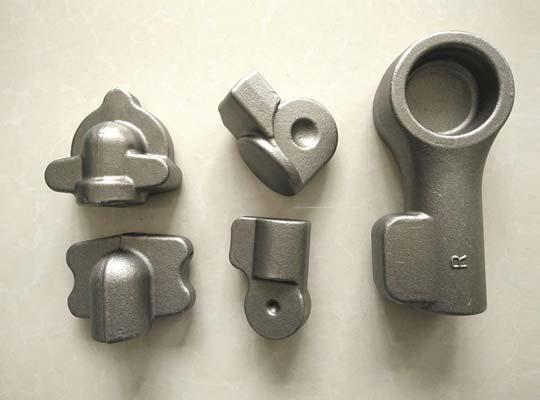- Contact Innally, Let you purchase forgings in China more favorable prices, products more assured!
- Hotline:+(86)15038323776 Email:innally@innally.com
How to check the quality and performance of forklift parts forgings?
- Category: Stainless steel forging, Thermal forging
- |
- Date: 04/12/2023
testing the quality and performance of forgings of forklift accessories requires the comprehensive use of a variety of methods. Appearance and dimensional testing are the primary means of inspection, while hardness testing, chemical composition analysis, non-destructive testing and mechanical properties testing provide more in-depth quality information.
Product Details
The quality and performance of forklift parts forgings are crucial to the normal operation and service life of forklifts. Therefore, it is essential to test the quality and performance of forgings. Below are some commonly used inspection methods to help you ensure that the quality and performance of forklift parts meet the requirements.
- Appearance detection
First of all, the appearance detection is one of the most preliminary and easiest methods. Observe whether the surface of the forging is smooth and smooth, whether there are cracks, bubbles, inclusions and other defects. These defects may affect the strength and durability of the forgings, so the appearance of the forgings should be free from obvious defects.
Second, size detection
Dimensional inspection is an important step to ensure that the forging meets the design requirements. Using calipers, micrometers and other measuring tools, the length, width, thickness and other dimensions of the forging are accurately measured, and compared with drawings or standards. The dimensional deviation should be within the allowable range to ensure that the forging can be properly installed and fitted with other parts.

Third, hardness test
Hardness is one of the important indexes to evaluate the mechanical properties of forgings. By using a hardness meter, the hardness value of the forging can be obtained by testing it at different locations. The hardness value should meet the design requirements or relevant standards to ensure that the forgings have sufficient strength and wear resistance.
- Chemical composition analysis
Chemical composition analysis is an effective method to detect the quality of forging materials. By sampling and chemical analysis, it is possible to determine whether the chemical composition of the forging meets the design requirements. Non-conformity of chemical composition may lead to deterioration of mechanical properties of forgings or other problems.
- Non-destructive testing
Non-destructive testing is a non-destructive testing method that can detect defects and cracks inside forgings. The commonly used nondestructive testing methods include ultrasonic testing, magnetic particle testing and liquid penetration testing. These methods can find cracks, pores, inclusions and other defects inside the forging to ensure the integrity and reliability of the forging.
- Mechanical performance test
Mechanical property testing is an important means to evaluate the strength and durability of forgings. The tensile strength, impact toughness and bending properties of forgings can be obtained by tensile test, impact test and bending test. These indicators should meet the design requirements or relevant standards to ensure that the forgings have sufficient bearing capacity and durability during use.
To sum up, testing the quality and performance of forgings of forklift accessories requires the comprehensive use of a variety of methods. Appearance and dimensional testing are the primary means of inspection, while hardness testing, chemical composition analysis, non-destructive testing and mechanical properties testing provide more in-depth quality information. Through the comprehensive application of these methods, the quality and performance of forgings can be comprehensively evaluated to ensure the safety and reliability of forklift accessories.
nannan
INNALLY mainly provides you with various types of cast and forged parts products. Welcome your inquiries! innally@innally.com
Related Products
Search
Forging center
- Steel forgings
- Aluminium alloy forging
- Titanium alloy forging
- Stainless steel forging
- Copper forging
- Automotive forgings
- Locomotive forging
- Bicycle forgings
- Motorcycle forging
- Rigging and fasteners
- Bearing forging
- Electric power fittings
- Marine forging
- Mechanical forgings for metalworking
- Mining machinery forgings
- Marine engineering forgings
- Construction machinery forgings
Popular product

© 2025. All Rights Reserved.






